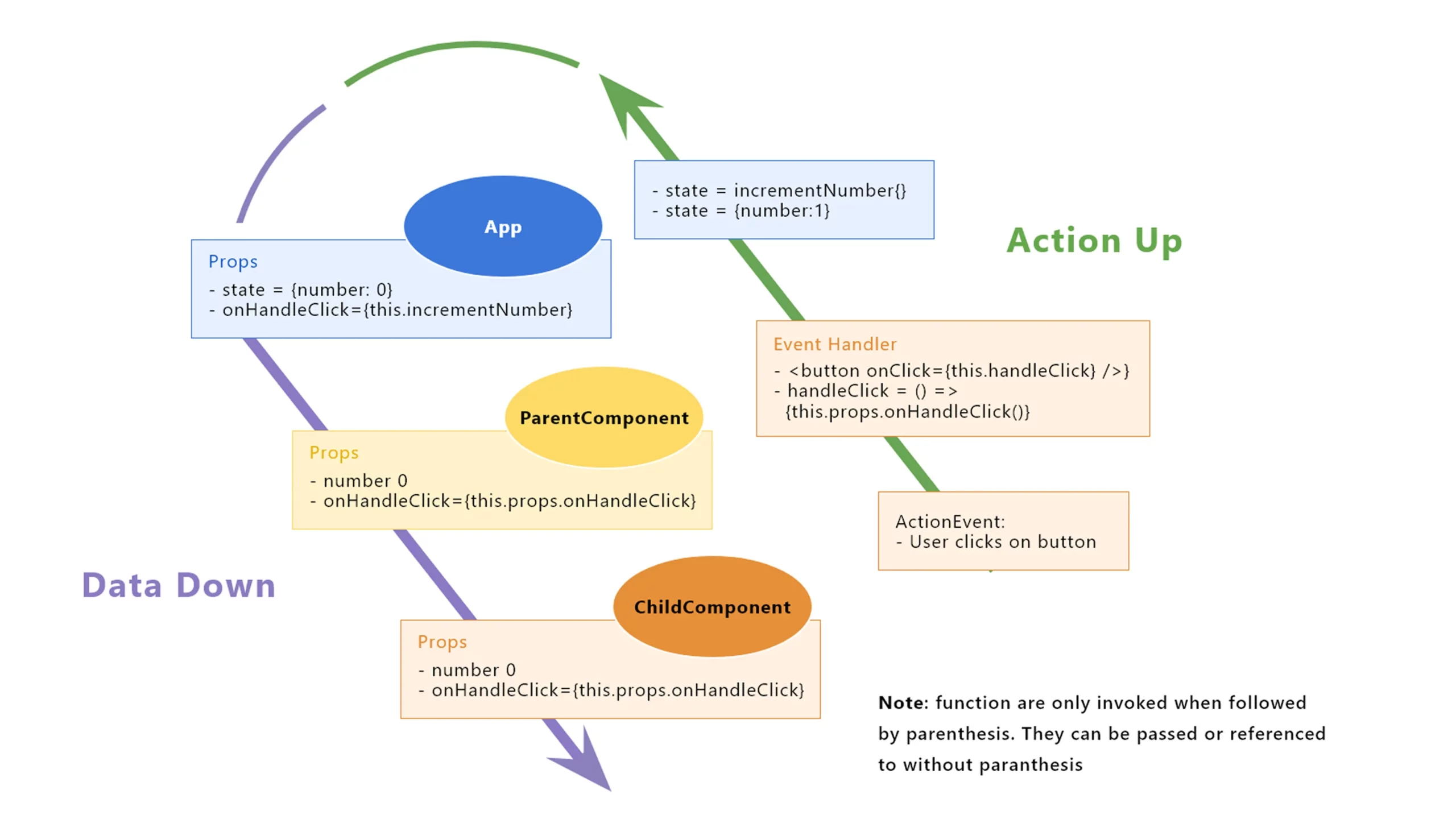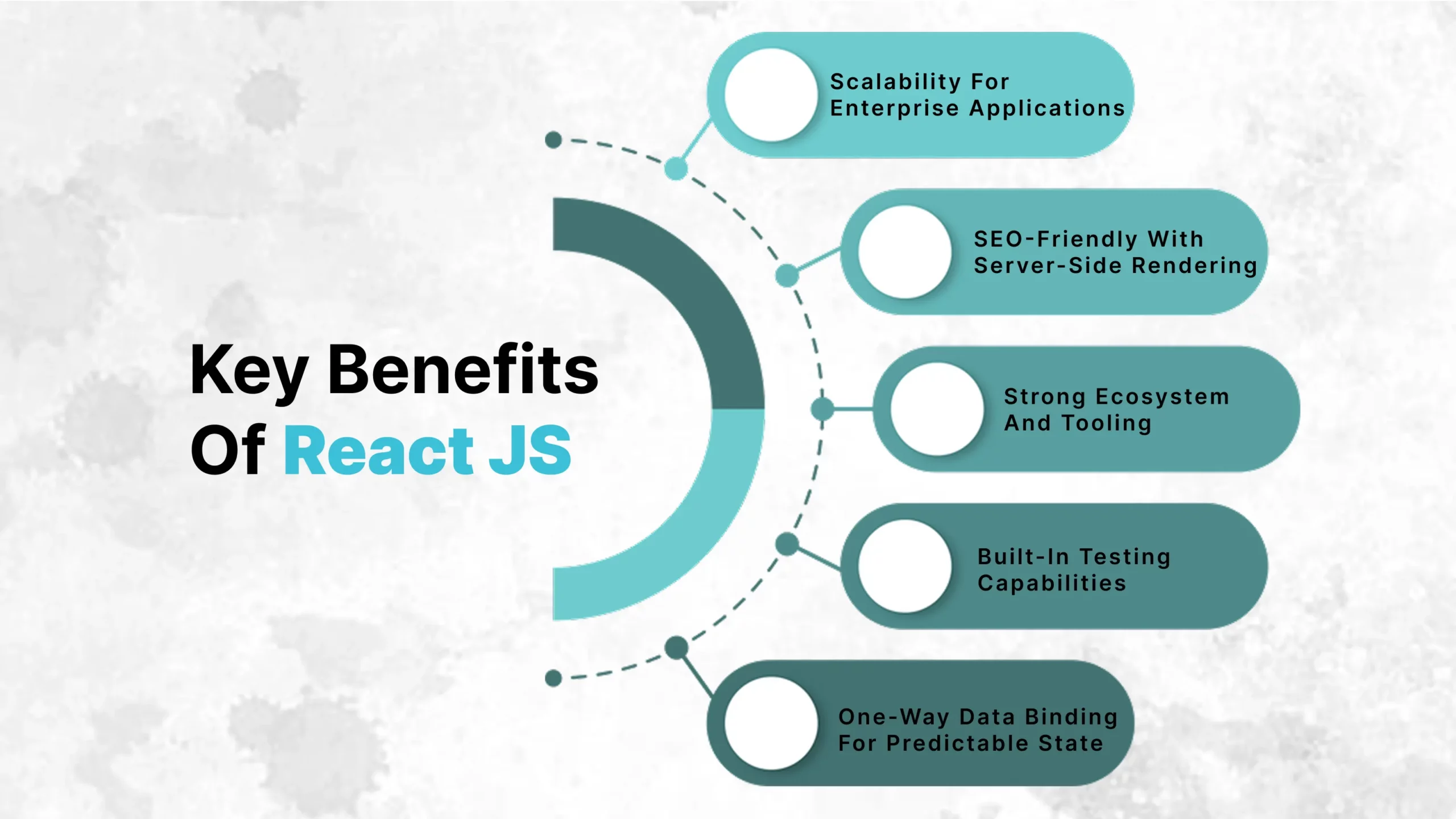Why is ReactJS becoming popular these days? Read to know!
Apr 11, 2021 (Updated: Nov 18, 2025)
|
7 min read
What is React JS?
React JS (also React or ReactJS) is an open-source JavaScript library created by Facebook (now Meta) in 2013 to develop dynamic and interactive user interfaces without touching the other two layers of apps (the control layer and the data layer).React is highly flexible and powerful in front-end development since it does not touch the control or data layers of apps, which is what full frameworks do.Understanding React's Core Philosophy
React changed the way web developers work by using a component-based architecture. Instead of building monolithic applications, developers create reusable, self-contained components that manage their own state and logic. This modular method is now the best way to build websites. Key characteristics that define React:- Declarative Programming: React takes care of how things work, while developers tell it what the UI should look like.
- Component-Based: Make encapsulated parts that work together to make complex UIs.
- Learn Once, Write Anywhere: Use the same ideas for both web (React) and mobile (React Native).
- Virtual DOM: Fast rendering with a small copy of the real DOM
Why is React JS So Popular?
 The meteoric performance of React JS is not a coincidence. According to the 2024 Stack Overflow Survey 40.6% of professional developers use React. This is what makes it one of the most popular web frameworks in the world. But what is so popular about this?
The meteoric performance of React JS is not a coincidence. According to the 2024 Stack Overflow Survey 40.6% of professional developers use React. This is what makes it one of the most popular web frameworks in the world. But what is so popular about this?
1. Backed by Meta and a Thriving Community
Meta (Facebook) doesn't just keep React up to date; some of the biggest tech companies in the world use it in their products:- Meta (Facebook, Instagram, WhatsApp)
- Netflix (UI streaming interface)
- Airbnb (booking platform)
- Uber (rider and driver apps)
- Amazon (various services)
- Tesla (car configurator)
2. Exceptional Performance with Virtual DOM
In React, the Virtual DOM is like a secret weapon for speed. The process is as follows:- React makes a copy of the real DOM in memory that is very small.
- When a state changes, React updates the Virtual DOM first.
- In the process of "reconciliation," React checks the Virtual DOM against the actual DOM.
- The actual DOM is only updated with the parts that have changed.
3. Gentle Learning Curve for JavaScript Developers
You can start making React apps in a few hours if you already know JavaScript, HTML, and CSS. Compared to frameworks like Angular, which require learning TypeScript, RxJS, and complicated architectural patterns, the learning curve is very low. What makes React easy to learn:- Works with the widely-used syntax of JavaScript (with JSX for markup similar to HTML).
- Clear and comprehensive documentation.
- Lots of tutorials and other ways to learn
- Create React App and Vite make it easy to set up.
- Templating does not necessitate the acquisition of additional languages.
4. Reusable Components Boost Productivity
React reusability is a breakthrough in the speed of development. You can use a button component you made once in:- Several pages within the same application.
- Similar projects of similar functionality.
- Repositories of common parts in your organization.
- Reduced development time by 30-50%
- Consistent UI/UX across applications
- Lower maintenance and Bug fixing.
- Faster onboarding for new team members
5. React Native Enables Cross-Platform Mobile Development
React Native takes the ideas behind React and applies them to mobile app development. This lets developers make native iOS and Android apps from a single JavaScript codebase. This means big savings on costs and a faster time to market. Companies using React Native include:- Discord
- Shopify
- Bloomberg
- Skype
Key Benefits of React JS

1. Scalability for Enterprise Applications
React apps can easily grow from simple landing pages to complex enterprise systems with thousands of parts. The modular design makes sure that adding new features doesn't break any of the old ones. Scalability advantages:- No drop in performance as the application grows
- Simple to connect to backend frameworks like Node.js, Django, and Ruby on Rails
- Architecture that works well with microservices
- Redux, MobX, or Zustand for good state management
2. SEO-Friendly with Server-Side Rendering
The problem with Single-Page Applications (SPAs) has been that their content is loaded on the fly, thus being unfriendly to SEO. React relies on Server-Side Rendering (SSR) to resolve this issue with such frameworks as:- Next.js: Industry-standard for React SSR
- Gatsby: Perfect for static site generation
- Remix: Modern full-stack framework
3. Strong Ecosystem and Tooling
React's ecosystem is unmatched in richness and maturity: Popular React Libraries:- State Management: Redux, MobX, Zustand, Recoil
- Routing: React Router, TanStack Router
- UI Components: Material-UI, Ant Design, Chakra UI, shadcn/ui
- Forms: Formik, React Hook Form
- Data Fetching: TanStack Query (React Query), SWR, Apollo Client
- Testing: Jest, React Testing Library, Cypress
4. Built-in Testing Capabilities
With Jest and React Testing Library, React makes testing easy. Programmers can write:- Unit Tests: Test individual components in isolation
- Integration Tests: Verify component interactions
- End-to-End Tests: Simulate real user workflows
5. One-Way Data Binding for Predictable State
Data flows in one direction in React, from parent components to child components. This makes apps:- Easier to debug and more predictable
- Less likely to have side effects that you didn't expect
- Easier for new developers to understand
- Testing and maintaining is easier
React vs Angular vs Vue: Which is Better?

When to Choose React:
- Building modern SPAs with complicated user interfaces
- Need for the most power and freedom
- Web and mobile development that works on every platform
- Access to the largest library network
- Fast prototyping and changes
Is React JS Worth Learning in 2026?
Yes, of course. This is why developers still think React is a good investment:Market Demand
- In the US, a React developer makes between $110,000 and $150,000 a year on average.
- In the US, a React developer makes between $110,000 and $150,000 a year on average.
- 65% of front-end job postings say you need to know how to use React.
- More and more people want to work in fintech, healthcare, e-commerce, and SaaS.
Future-Proof Technology
React continues evolving with new features:- React 18: concurrent rendering and automatic batching
- React Server Components: Revolution in server-side rendering
- Suspense: Better handling of loading states
- React Compiler (Upcoming): Automatic optimization
Career Versatility
Learning React gives you access to:- Web app development on the front end
- Creating apps for mobile devices (React Native)
- Full-stack development with Next.js and Remix
- Jobs in UI/UX engineering
- Positions of technical leadership
Getting Started with React
Prerequisites
Before diving into React, you should be comfortable with:- HTML/CSS: Structure and styling
- JavaScript ES6+: Arrow functions, destructuring, modules, promises
- NPM/Yarn: Package management
- Git: Version control basics
Setting Up Your First React App
Option 1: Create React App (CRA)npx create-react-app my-app cd my-app npm startOption 2: Vite (Faster, Modern)
npm create vite@latest my-app -- --template react cd my-app npm install npm run devOption 3: Next.js (Production-Ready)
npx create-next-app@latest my-app cd my-app npm run dev
Your First React Component
import React from 'react';function Welcome({ name }) {
return (
<div className="welcome-container">
<h1>Hello, {name}!</h1>
<p>Welcome to React development</p>
</div>
);
}
export default Welcome;
Learning Roadmap
Month 1: Fundamentals- JSX syntax and components
- Props and state
- Event handling
- Conditional rendering
- Lists and keys
- Hooks (useState, useEffect, useContext)
- Component lifecycle
- Form handling
- API calls and data fetching
- React Router for navigation
- Custom hooks
- Context API and state management
- Performance optimization
- Testing components
- Deployment strategies
Common React JS Questions Answered
Is React a Framework or Library?
React is more of a library than a full framework. It only works on making user interfaces (the "V" in MVC). But when you use it with tools like React Router (for routing) and Redux (for managing state), it works like a full framework.What Companies Use React JS?
React is used by thousands of businesses around the world, such as:- Big tech companies: Meta, Netflix, Amazon, and Tesla
- PayPal, American Express, and Capital One are all financial services.
- Shopify, Walmart, and eBay are all examples of e-commerce.
- Twitch, Hulu, and BBC are all streaming services.
- WhatsApp, Instagram, and Discord are all social media sites.
How Long Does It Take to Learn React?
- Basic proficiency: 2-4 weeks (with JavaScript background)
- Job-ready skills: 2-3 months of focused learning
- Advanced mastery: 6-12 months of real-world experience
Is React Better Than Angular or Vue?
There is no objectively "better" option; it all depends on what you need:- Choose React for: the most flexibility, the biggest ecosystem, and mobile development.
- Choose Angular for: business apps, strong typing, and a single solution
- Choose Vue for: easier to learn, gradual integration, and smaller teams
Conclusion: Why React JS Dominates Modern Web Development
The popularity of React isn't just hype; it's based on real benefits:- Performance: Virtual DOM delivers exceptional speed
- Productivity: Reusable components accelerate development
- Flexibility: Works with any backend or architecture
- Community: Largest support network and resources
- Career Growth: Highest-paying front-end skill
- Future-Proof: Continuous innovation from Meta

